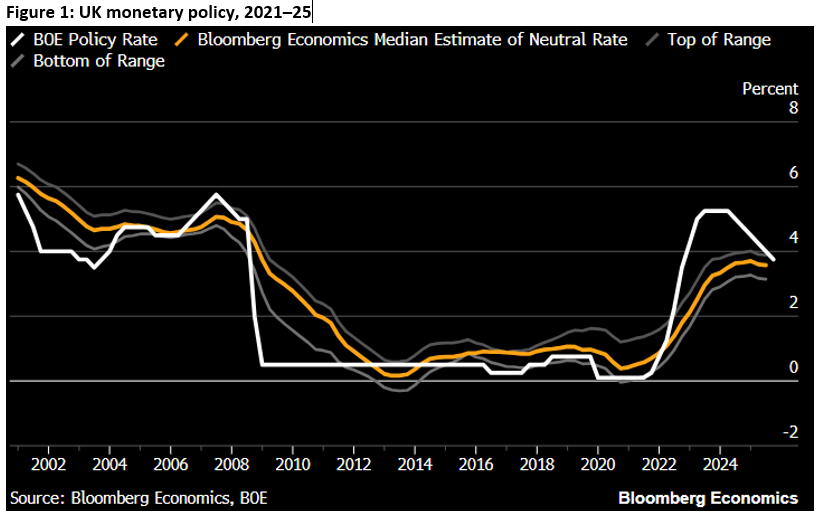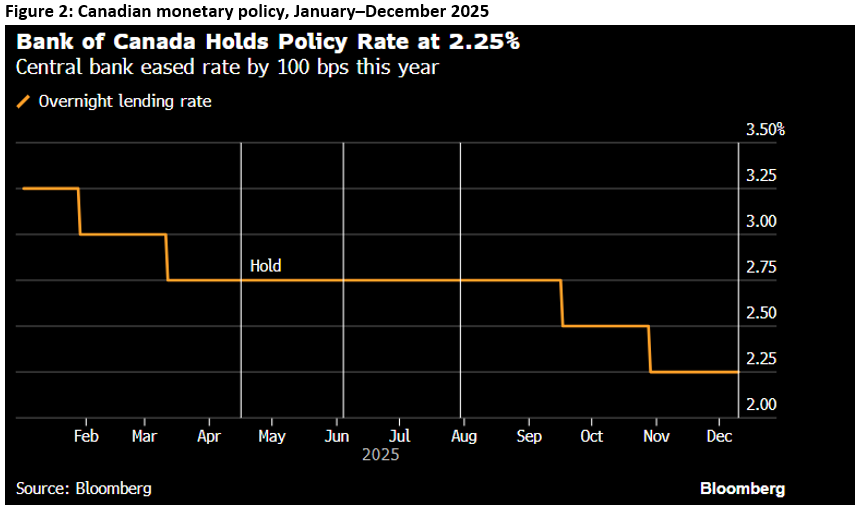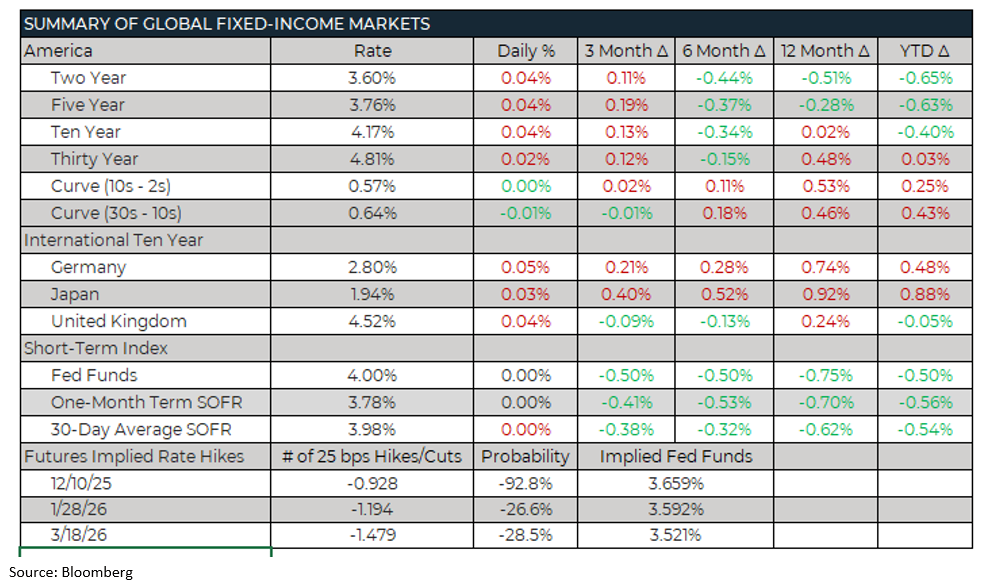Baby, It’s Cold Outside
In the classic holiday duet “Baby, It’s Cold Outside,” the party host attempts to convince his guest to stay longer, as a winter storm rages outside. The guest, however, responds with a bevy of reasons for why she must leave (“I really can’t stay”).
The back and forth in the song is reminiscent of the differing interest-rate decisions we saw across the globe over the last two weeks from major central banks: Some voted to keep the party going by cutting rates further, while others insisted that the cutting party is over. Both the European Central Bank (ECB) and Bank of Canada (BoC) held rates constant (“My mother will start to worry”). And the Bank of England and Federal Reserve cut rates by 25 basis points (“Beautiful what’s your hurry?”).
In a briefing following the ECB’s decision, ECB President Christine Lagarde told reporters: “There was a unanimous decision that was taken today concerning the rates that we decided to hold. But there was also a unanimous view that all optionalities should remain on the table.” Ahead of the meeting last week, the European economic landscape was strong: The economy continued to expand even through the worst of the trade wars and even surpassed expectations in the third quarter.
As a result, investors now believe the ECB will leave rates unchanged for the foreseeable future, as inflation will likely decline in the near term. Yet at least one ECB board member, Isabel Schnable, believes that the ECB’s next move will be a rate hike. Likewise, 60% of economists in a recent Bloomberg survey said they also expect that the next move by the ECB will be a hike.
On December 17, the easing cycle continued for the Bank of England (BoE), where a sixth-straight cut brought the key interest rate to 3.75% (Figure 1). That cut followed a surprising inflation print, which showed the headline Consumer Price Index down to 3.2% from 3.6% in November. This development led investors to believe that inflation had reached its peak in the UK and was on its way down. However, immediately following the decision, BoE Governor Andrew Bailey said: “The calls [to cut] will become closer and I would expect the pace of cuts, therefore, to ease off at some point.” Indeed, the latest decision passed narrowly (five to four split), with four voters citing ongoing inflation concerns as a reason to hold rates constant.

On December 10, in a widely expected move, the BoC left its policy interest rate constant at a rate of 2.25% (Figure 2), citing a Canadian economy that was “resilient overall.” While Tiff Macklem, the BoC’s Governor, cited US tariffs as a continuing pain point inhibiting the Canadian economy, recent data also showed that Canada’s labor market added over 180,000 jobs in three months, while real GDP grew by a surprising 2.6% in the third quarter. Despite this positive news, Macklem stated that “the volatility we’re seeing in trade and quarterly GDP make it more difficult to assess the underlying momentum of the economy.” Economists foresee Canada holding rates steady, with the likelihood of a cut not exceeding 50% before October 2026.

Also on December 10, the Federal Open Market Committee cut the benchmark federal funds rate for the third straight time by 25 bps. After the decision, hawkish tones from Chairman Jerome Powell (“We’re well positioned to wait and see how the economy evolves from here”) led investors to assume the easing period was over. But such assumptions changed fast on December 18 when the November CPI report was released.
The report showed the slowest annual growth of inflation since early 2021. Year over year, inflation grew by only 2.7%, a massive surprise from the median forecast of 3.1% and bolstered odds for further rate cuts in 2026. As it stands, forecasters foresee an 80% probability of a cut by the Fed’s April 2026 meeting, as well as two total cuts next year. Speaking on Fox Business following the release of the CPI report, hawkish Chicago Fed President Austan Goolsbee (a dissenter at the FOMC’s December meeting) conceded that “you never want to hinge too much on a single month, but that [November] was a good month.” Goolsbee added that he would be comfortable seeing rates lowered if US inflation continues to come down and employment remains stable.
While 2025 began with a broadly unified, global easing cycle following a prolonged period of restrictive policy, recent decisions suggest that we are entering a more divergent era of monetary policy. Some central banks appear ready to end the party and head home; others are seeing reasons to stay a little longer. Either way, we at Talking Points will gladly raise a glass to the end of 2025 and wish our readers a happy, healthy and prosperous 2026. See you in January.


Looking for more economic insights? Check out all of our previous Trading Desk Talk posts.
The information contained herein, including any expression of opinion, has been obtained from, or is based upon, resources believed to be reliable, but is not guaranteed as to accuracy or completeness. This is not intended to be an offer to buy or sell or a solicitation of an offer to buy or sell securities, if any referred to herein. Lument Securities, LLC may from time to time have a position in one or more of any securities mentioned herein. Lument Securities, LLC or one of its affiliates may from time to time perform investment banking or other business for any company mentioned.
